|
Opinions Hotel operating agreements: The modern- day dinosaur 17 JULY 2018 6:46 AM Hotel operating agreements have failed to keep pace with operating realities and industry landscape, creating misalignment between owners and operators. By KristieDickinson Everyone loves a summer blockbuster, particularly one featuring dinosaurs (… and well, Chris Pratt too). While this story doesn’t include any A-list celebrities, it does revolve around a dinosaur: one that is alive and well and thriving in its natural habitat, the hotel industry. The dinosaur I speak of is the hotel operating agreement. Over the course of a given year, our asset-management team reviews hundreds of hotel HOAs, some of which were inherited, while others we have had a hand in negotiating. And, while we are successful in negotiating additional rights and flexibility for owners, I continue to be amazed by how little the standard terms and conditions in HOAs have changed over the past 30 years. There has been a marked improvement in the overall relationship and level of collaboration between owners and operators, yet these agreements fail to reflect advancements in alignment. Not only have these agreements remained largely unchanged, they fail to acknowledge current trends and permanent changes that have occurred within the industry, rendering many aspects of these agreements non-applicable or in direct contradiction to modern-day operating realities. In short, there exists a clear disconnect between reality, and the legal document that governs this crucial relationship between owner and operator. Highlighted here are just a few of the fossilized clauses that have been carefully preserved over time in most HOAs and/or prevailing issues that should be considered to strike an improved balance between owner and operator objectives. Area of protection Area of protection is a concept that provides protection for owners of a specific brand, within a defined radius, to insure product exclusivity for a period of time. This means if you build a StayHere Suites, the brand will not franchise/manage another StayHere Suites within an agreed upon distance of your hotel, at least until 20XX. This does not, however, preclude the parent company from putting a StayThere Suites right next door. When AOPs were originally introduced into HOAs, for the most part it was fair, given that brands were singular |
|
entities (i.e., one company and one brand). What AOP fails to recognize today is the massive brand consolidation that has taken place, coupled with explosive growth in the number of new brands created. Today, the value of an AOP is vastly diluted as owners are “protected” against only one specific brand among as many as 30 others under a single umbrella. As we think about negotiating future HOAs, a broader definition should be considered in the AOP (e.g. “full- service,” “select-service”), as opposed to a brand-specific qualifier. Competitive sets Considering new brand introductions, brand mergers and acquisitions, changes to STR reporting guidelines and the impact of the sharing economy, the idea that a competitive set would remain valid for 20-plus years is absurd, which is why this is one of the most heavily amended clauses in an HOA. (STR is the parent company of Hotel News Now.) The ability to obtain comparative data on a meaningful competitive set has severely diluted the value of a contracted “competitive set,” which serves as the basis for the RevPAR Index portion of many performance tests, so the set is not inconsequential. And, while I might also argue that the merits of performance tests themselves are questionable in terms of balancing objectives—i.e., selecting mutually agreeable RevPAR Index and hurdles in earnings before interest, taxes, depreciation and amortization—the issue of performance is very complicated and highly individual to each deal, and probably warrants its own article. Loyalty program transparency & reimbursement rates Roughly between 4% and 5% of every dollar spent by hotel guests belonging to a given brand loyalty program goes to fund reward program redemptions, yet there is essentially no reporting that supports the owner return on investment on these dollars. Further, the process by which hotels are reimbursed for reward stays are often in direct contradiction to |
|
profit-centric operating strategies. incentivizes the operating team to achieve higher occupancies, often at the expense of rate. It makes no sense that the loyalty program guests are charged Page 1 / 2 |
time. This means if you build a StayHere Suites, the brand will not franchise/manage another StayHere Suites within an agreed upon distance of your hotel, at
|
least until 20XX. This does not, however, preclude the parent company from putting a StayThere Suites right next door. When AOPs were originally introduced into HOAs, for the most part it was fair, given that brands were singular |
|
entities (i.e., one company and one brand). What AOP fails to recognize today is the massive brand consolidation that has taken place, coupled with explosive growth in the number of new brands created. Today, the value of an AOP is vastly diluted as owners are “protected” against only one specific brand among as many as 30 others under a single umbrella. As we think about negotiating future HOAs, a broader definition should be considered in the AOP (e.g. “full- service,” “select-service”), as opposed to a brand-specific qualifier. Competitive sets Considering new brand introductions, brand mergers and acquisitions, changes to STR reporting guidelines and the impact of the sharing economy, the idea that a competitive set would remain valid for 20-plus years is absurd, which is why this is one of the most heavily amended clauses in an HOA. (STR is the parent company of Hotel News Now.) The ability to obtain comparative data on a meaningful competitive set has severely diluted the value of a contracted “competitive set,” which serves as the basis for the RevPAR Index portion of many performance tests, so the set is not inconsequential. And, while I might also argue that the merits of performance tests themselves are questionable in terms of balancing objectives—i.e., selecting mutually agreeable RevPAR Index and hurdles in earnings before interest, taxes, depreciation and amortization—the issue of performance is very complicated and highly individual to each deal, and probably warrants its own article. Loyalty program transparency & reimbursement rates Roughly between 4% and 5% of every dollar spent by hotel guests belonging to a given brand loyalty program goes to fund reward program redemptions, yet there is essentially no reporting that supports the owner return on investment on these dollars. Further, the process by which hotels are reimbursed for reward stays are often in direct contradiction to profit-centric operating strategies. For example, occupancy thresholds that determine the rate by which hotels will be reimbursed for loyalty guest stays are often in excess of 90%, which incentivizes the operating team to achieve higher occupancies, often at the expense of rate. It makes no sense that the loyalty program guests are charged points tied to rates—the higher the rate, the more points it costs the guests—yet hotels get a flat rate or sliding scale based solely on occupancy. Owners should be able to assess loyalty programs not only on the basis of how many guests they deliver on paid stays, but also on redemption stays; redemptions should help not hurt the operation financially. While loyalty practices and related fees are not well-documented within the HOA, this is an area I believe owners would benefit from improved transparency and better alignment of financial goals. Centralized services fees and allocations Centralized services should be capped, including “new” or “planned” investment into new corporate systems. The basis for these calculations is often total revenue, but this also should be questioned. For instance, what do human resources fees have to do with total revenue? Transparency with respect to centralized “fees” continues to be a challenge for ownership, both in terms of those assessed for the management function (marketing, accounting, IT) as well as those allocated over the course of the year that tie back to any number of ongoing brand initiatives or cost-sharing arrangements. There is no other form of real estate where owners have responsibility for expenses with such limited visibility to total assessed fees imposed by the operator. Management compensation Saving the best for last, but why “operators” who are as equally responsible for distribution and revenue as they are for expense management are primarily and in some instances exclusively compensated on top-line revenue is puzzling. Operators typically get to share in the upside through an “incentive fee” if they exceed agreed-upon profit expectations, but there is no downside risk. This results in a philosophical misalignment of interests. There is a reason that Wall Street basically ignores incentive fees when valuing hotel companies, and there is a reason the brands themselves give little or no weight to incentive fees when they calculate how much they are willing to pay for a management contract in the form of “key money.” From an economic perspective, they are perfectly happy without a single dollar from incentive fees. That is why operators are laser-focused on top-line revenue—in some instances to the detriment of profit—and management agreements are engineered to support this philosophy at every turn. Calculating base fees on gross operating profit seems much more in line with compensation based on all that is within an operator’s control. Maybe it’s time to split the base fee, with a portion attributed to revenue and another portion tied to GOP, or all of it! For more on this topic, see ‘A hotel owner’s bill of rights’ Kristie Dickinson is EVP of CHMWarnick, a globally recognized leader in hotel asset management and owner advisory services. She is the author of numerous chapters and articles representing the hotel owner perspective, offering insight on opportunities for optimizing hotel profit and asset value. Ms. Dickinson is a member of the International Society of Hospitality Consultants (ISHC) and Co-Chair of the Society’s awards committee. The opinions expressed in this column do not necessarily reflect the opinions of Hotel News Now or its parent company, STR and its affiliated companies. Bloggers published on this site are given the freedom to express views that may be controversial, but our goal is to provoke thought and constructive discussion within our reader community. Please feel free to comment or contact an editor with any questions or concerns. |
|
Copyright © 2008-2018 STR, Inc. Page 2 / 2 |

